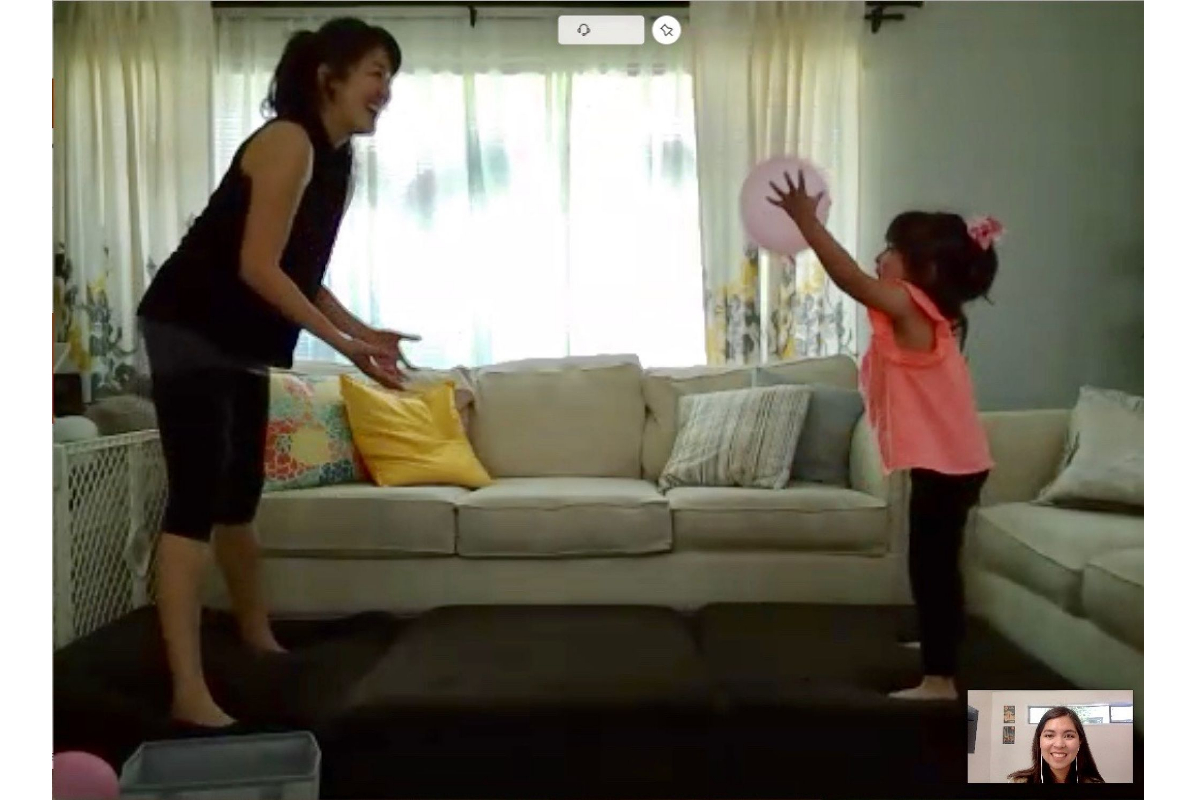Community and Rehab Care - Neuro Rehabilitation / July 2, 2020

For Rehab Without Walls (RWW) therapists, treating patients during the COVID-19 pandemic meant incorporating the use of teletherapy to treat patients. For RWW DPT, PT, Karissa Walker Shiraishi, her first teletherapy patient was Ellie, a sweet and smiley preschooler who had been receiving in-person treatment at the clinic. The sessions included the use of the Universal Exercise Unit (spider cage), treadmill, and exercise ball. With none of this type of equipment being available in her home, Ellie and her mom spent the first teletherapy session showing Karissa around their home. Karissa was able to create a therapy program for Ellie using household items as makeshift materials, rolled towels became balance beams, couch cushions became Airex pads, and step stools became therapy benches.
Before long, Ellie’s house had become an enormous jungle gym! Colored spots were placed on the stairs to help her step, painter’s tape was strung like vines wall-to-wall through the hallway, and the living room floor was no longer visible with all the pillows and cushions covering it. These home modifications stayed in her house week to week, requiring Ellie to step over the tape vines to reach the bathroom and step on the colored dots in the stairway to get to her bedroom.
Therapy activities started becoming part of Ellie’s daily routine as she had the opportunity to practice her new skills every single day at home. Ellie’s mom began telling stories of Ellie asking to play therapy games outside of teletherapy time and how they have learned to adapt different parts of Ellie’s routines at home to work on her strength and balance. During a recent session, Ellie started adding in a new animal walk she and her mom thought of on their own: The Bear Frog!
Karissa has found that parents of her patients are much more involved in their plan of care and many patients are improving at a faster rate than before the COVID-19 pandemic since the families are learning functional and creative ways to incorporate their exercises and adapt their current routines to help their children learn and grow at home.
“Although I dearly miss the satisfaction of a real high-five, I’m so grateful for the unique opportunities that teletherapy has provided in helping me become a better therapist and serve my patients and families with a higher degree of care,” said Karissa.
Filed under: Community and Rehab Care - Neuro Rehabilitation, Media Hub